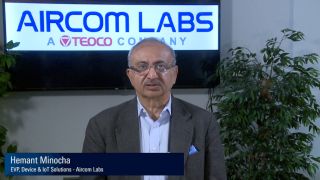5G NR testing – are you ready for the 5G challenges?
5G NR deployment is advancing rapidly, offering new use cases and a plethora of applications, and opening numerous opportunities for new devices and infrastructure equipment
5G changes the way we communicate. By introducing a paradigm shift towards a user- and application-centric technology framework, 5G aims to enhance system efficiency and provides incredible flexibility, supporting three essential use case families:
- Enhanced mobile broadband (eMBB) addresses the growing demand for faster and higher-volume data access and ushers the ubiquitous connectivity.
- Massive machine type communications (mMTC) focuses on supporting communication between a large number of devices; typically Internet of Things (IoT) sensors that transmit low volumes of data and do not require real-time communication.
- Ultra-reliable, low latency communications (URLLC) enable data exchanges to provide reliable and critical communications like industrial IoT, automotive safety and health monitoring, requiring low latency and network resilience.






















